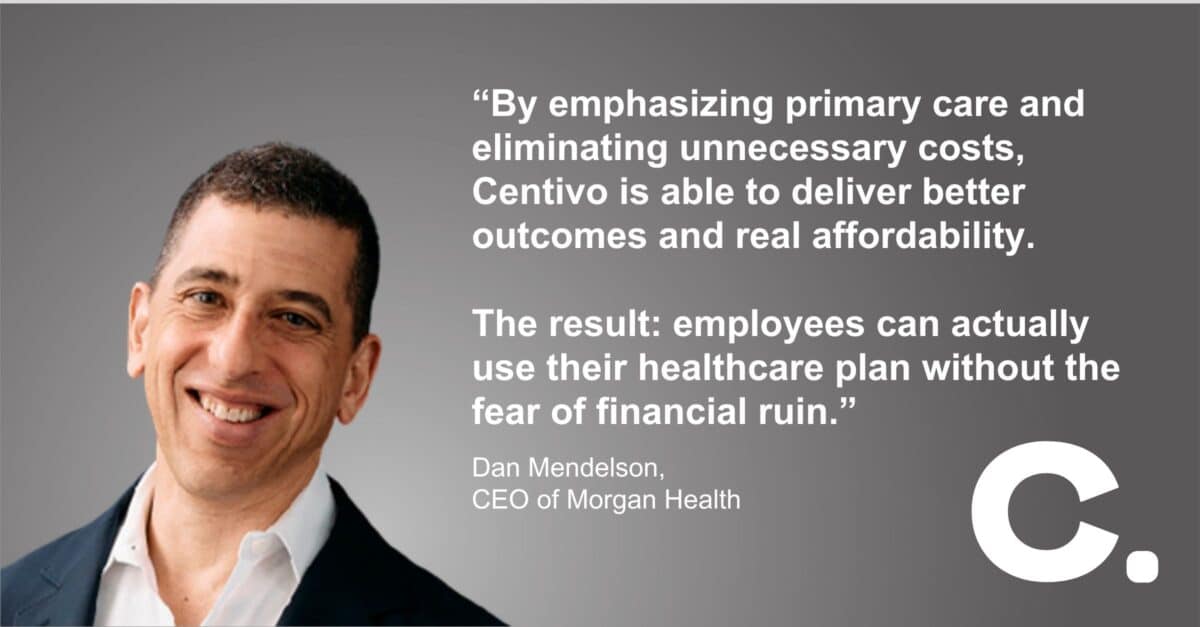I hope you got a chance to watch the launch of the 2nd annual Physician Value Study with the Business Health Care Group (BHCG). If not, here’s a link.
You will hear from Jeff Kluever, the fearless leader of BHCG; Dave Ostendorf, Centivo’s chief actuary; Dana Richardson, CEO of the Wisconsin Health Information Organization (WHIO) and Earl Steinberg from GNS Healthcare, a legend in data analytics and clinical/financial performance. The presentation explains how BHCG and GNS, using the WHIO all-payer claims database, have measured with scientific, defendable rigor the quality and efficiency of physicians in Wisconsin.
It may seem that an analysis like this is something only a statistician or actuary could love.
But the results and implications are absolute game changers for employers.
Why?
Two reasons:
- It is incredible how far we have come in collecting, analyzing and reporting physician quality and efficiency.
- Even more importantly, this data is being applied to the real world, in real networks, with real health plan members – and having a positive impact.
To explain why I am so excited about the implications and actions surrounding the Physician Value Study in Wisconsin, you need to understand a little about me and some of my early attempts at measuring physician value.
Before I joined Centivo, I was with the Northeast Business Group on Health (NEBGH) for 24 years, 21 of them as President & CEO. From 2006-2008, we tried a version of the BHCG/GNS research for the Northeast market. At that time, there was some work being done to measure and publicly report the quality of physician groups – but not individual physicians inside those groups.
Under the elegant name of the “2008 Multi-Payer Data Reporting Project: Primary Care Aggregate Report,” NEBGH convinced Aetna, Cigna, HealthNet, Oxford, UHC, HIP, GHI and Empire BCBS to give us basic HEDIS1 data. Working with IPRO2, we took the HEDIS data and provided primary care doctors a report with their aggregated HEDIS scores along with a combined list of patients to follow up with who had not received necessary services.
In the end, more than 7,200 primary care docs in the NY Metro area got a paper report in the mail. We were prepared for a backlash.
But there wasn’t much. Barely a peep.
So, this at-the-time-groundbreaking initiative went completely unnoticed by the people it was designed to serve. I was proud of the work but so frustrated at the physician response (or more specifically, the lack thereof). In addition, our efforts to use performance and efficiency data regarding specialist referrals also went nowhere.
Fast forward 15 years. Compare my early experience with what BHCG is doing. Unlike giving the report to physicians in the hope they would care and/or do something with it, BHCG is using the physician performance data to curate high-performing networks for its member organizations. And this, I am very proud to say, is where Centivo comes in.
We help BHCG build these networks, and the Physician Value Study is a key component in determining which providers are “in” or “out.” Right now, it’s about 75% to 25%. This is crucial because Centivo’s primary plan design model requires each member to select one of these high-performing, in-network Primary Care Physicians (PCPs) to “activate” to qualify for better coverage levels.
In turn, the selected PCPs must refer to higher performing specialists in the BHCG/Centivo networks.
A little better than a snail-mailed report, wouldn’t you say?
Even with this game-changing approach, it’s also important to understand that the 25% of physicians who are “out” (i.e., a member cannot select them) are not permanently blacklisted. In fact, the long-term goal of BHCG is to “raise all boats” and to work with all stakeholders so that ultimately 100% of PCPs and specialists are high performers.
What does this all mean for self-funded employers? Obviously, if you are based or do business in Wisconsin, you have access to truly cutting-edge data insights at the individual physician level. If you are a BHCG member (or looking to join), we would love to talk to you about how you can tap into the high-performing networks that utilize the Physician Value Study.
Even if you are not in Wisconsin, the ability to offer proprietary networks grounded in value-based care is not just a nice, futuristic idea. We at Centivo have based our entire model on this very concept, and we are out building and refining our networks every day in markets all over the country. And the results have been nothing short of compelling.
Do you want to discuss how you can change the game for your company? Let’s chat!
1 HEDIS (Healthcare Effectiveness Data and Information Set) is a widely used set of performance measures in the managed care industry, developed and maintained by the National Committee for Quality Assurance (NCQA). Source: Healthcare Effectiveness Data and Information Set – Wikipedia.
2 IPRO is a non-profit organization that, as per its website, makes creative use of clinical expertise, emerging technology and data solutions to make the healthcare system work better. Source: IPRO – Better healthcare, realized.


